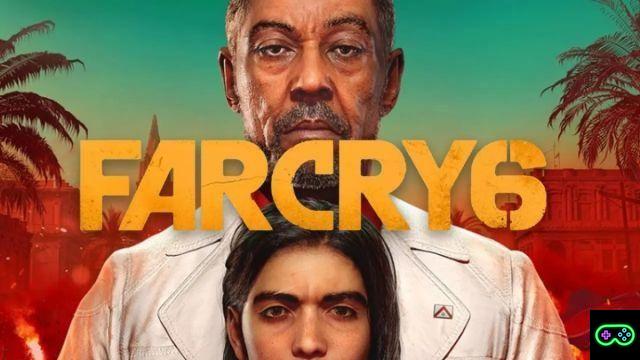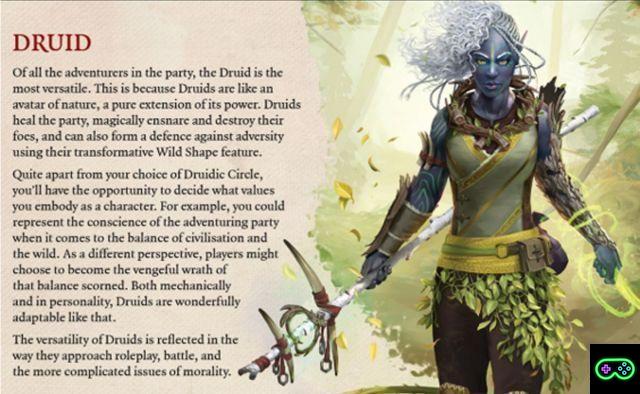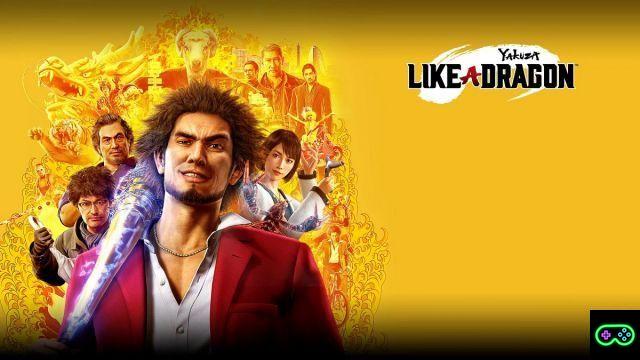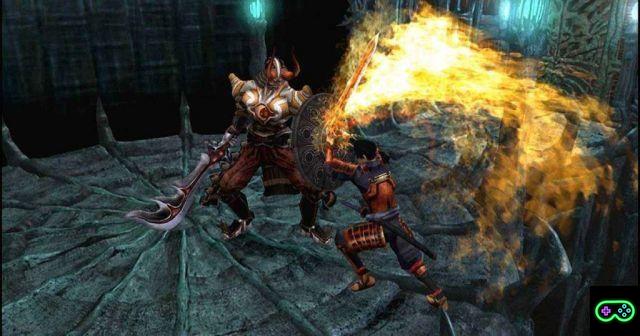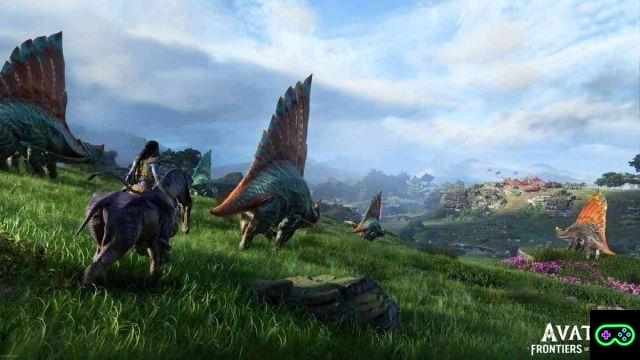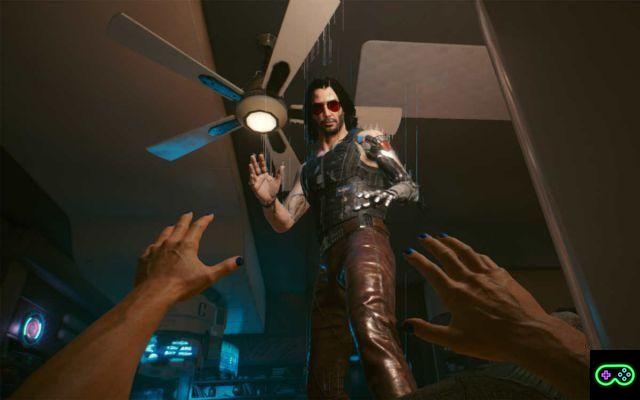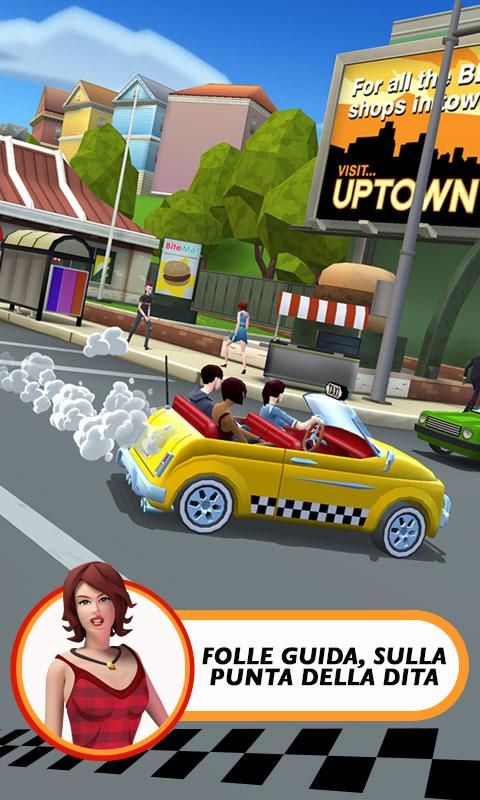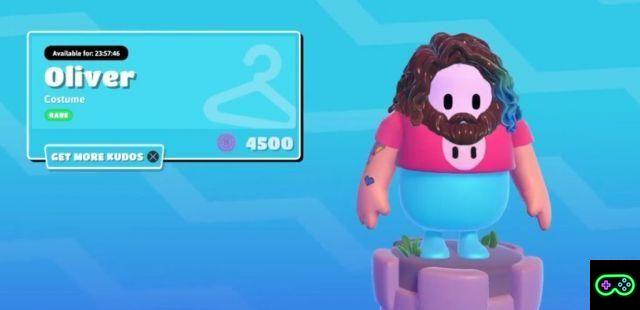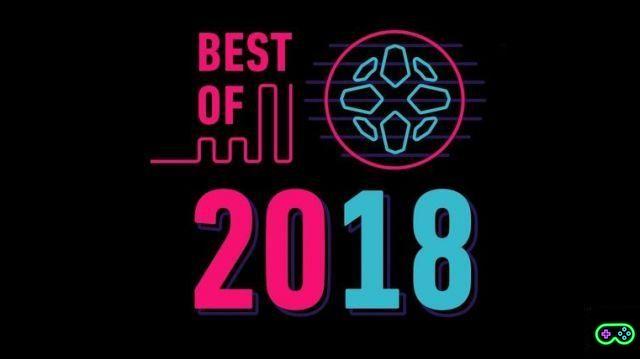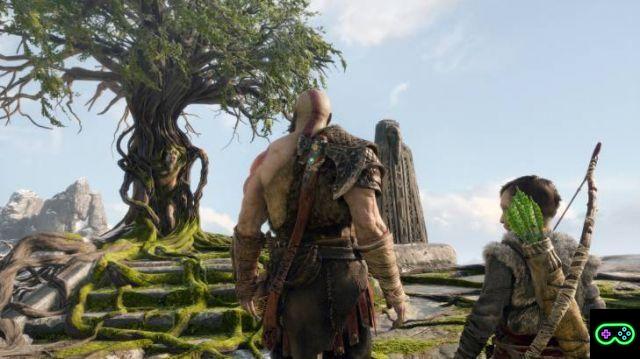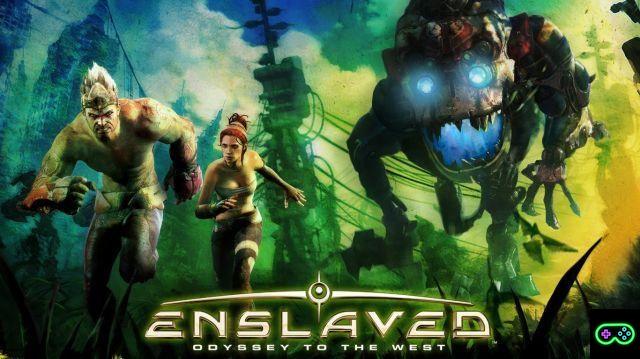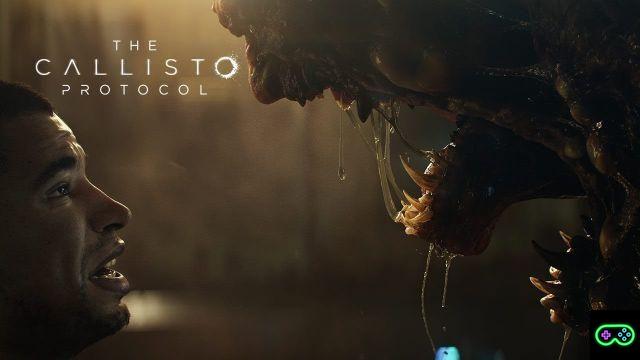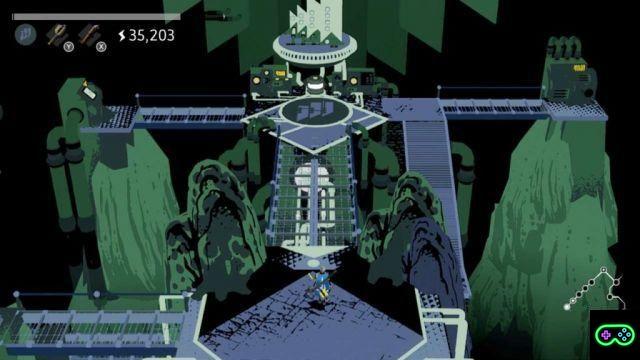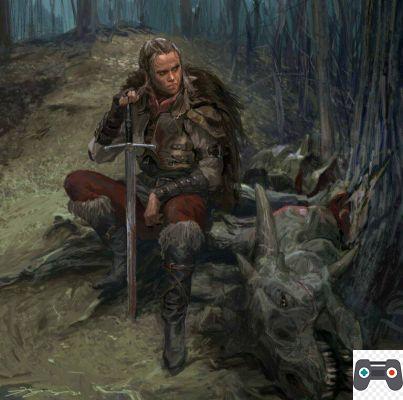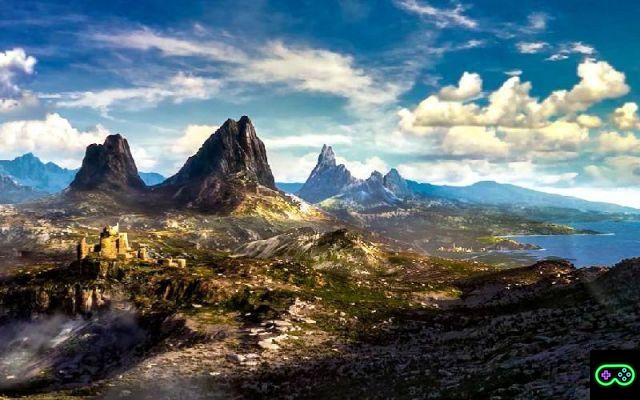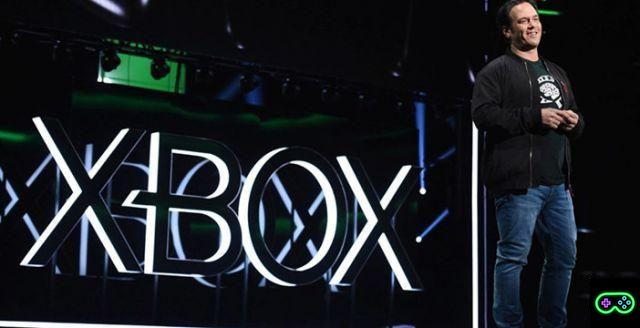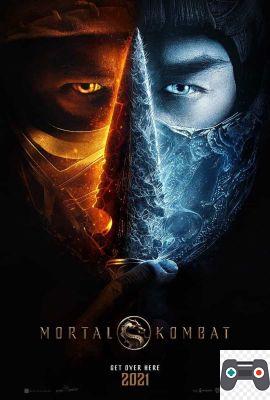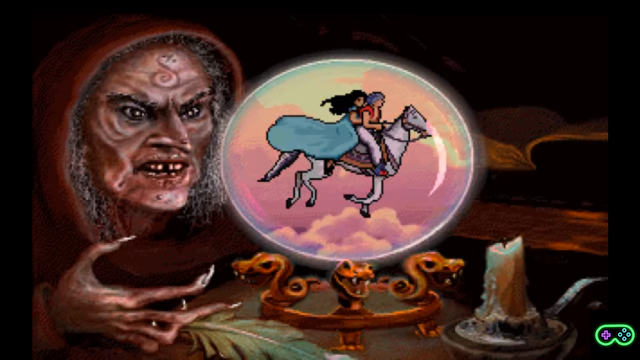We continue our journey to discover the Norse mythology and Scandinavian in God of War 4, with this 36th appointment of the Bear's Lair: for those who do not know it, we remind you that it is a weekly column specialized in the analysis of mythological elements in video games, role-playing games and - sometimes - TV series.
Instead of continuing in a straight line, following slavishly the plot of the game, we're going to jump a bit here and there, especially in the latter part. On the other hand, the story of God of War (2018) it is almost finished, and it is not long before we dive into the extrapolation of the missing elements, to be placed under the fine ordinance lens of the expert investigator of the occult.
The story of God of War 4 ends, Scandinavian mythology does not
After a first part in which we introduced the main characters, after a second stage full of cosmology norrena, after a third step that led us to reflect onidentity of Atreus and to know some of the creatures of Scandinavian mythology, and finally after a fourth passage which, between a minor myth and a gag relief, marked the end of Kratos' main quest, we are now preparing to end the journey we have undertaken. Almost, come on.
![[The Bear's Lair] God of War (2018) and Norse mythology - Vol. 5](/images/posts/5df3c6d1c9596d4a07d2020382ac00e8-0.jpg)
We begin, in fact, by accompanying Kratos and Atreus in their return from Jötunheim, the Kingdom of the Giants: there they scattered the ashes of Faye / Laufey, second wife of Kratos and mother of the young man Atreus, carrying out the will of the mysterious woman. On the way they also broke the blessing / curse of Baldur, for good measure they made it dry and therefore attracted the ire of the mother Freya, but so much.
The Ride of the Valkyries
Going back the golden steps that had brought them to their destination, our heroes come across the severed head of mimir, the peculiar god of knowledge who accompanied them for much of the journey; they had left her with the reconciled dwarf brothers, Brock and Sindri, which we talked about at length in previous appointments, but now the derelict decapitated divinity (DDD for those around) lies on the ground, even more disconsolate than usual.
![[The Bear's Lair] God of War (2018) and Norse mythology - Vol. 5](/images/posts/5df3c6d1c9596d4a07d2020382ac00e8-1.jpg)
Here the protagonists discover that il tempo flows with a different speed in the realm of giants, compared to that of Midgardr: while a few minutes have passed for them, a certain time has passed in the mortal wastes, during which time Freya visited the head of mimir.
What did he want the goddess of fertility, sex, seiðr, divination and various other aspects that we have already repeated too many times? Bazzecole: just knowing where Odin / Odhinn had hidden its wings from Valkyrie badass.
Yes, because apparently the daughter of Njörd, sister of Freyro, ex-wife of Odhinn and mother of Baldur was, in the past, also the Queen of the Valkyries, before Sigrun. Imagine how dangerous it can be that, in addition to being the strongest among the Valkyries, is also the most powerful of the gods vanir? At least in the game it is, apparently.
![[The Bear's Lair] God of War (2018) and Norse mythology - Vol. 5](/images/posts/5df3c6d1c9596d4a07d2020382ac00e8-2.jpg)
Le Valkyries of the game, nine in total, are entities that sift the dead in battle and bring the deserving to the halls of Valhalla. In the myth, in fact, the Valkyries of Odin they get a sort of second choice: the first is up to Freya, which brings the bravest to the battlefields of Folkvangr, where it is also located Seating, the palace (or the ship, depending on the sources) of the same Freya.
After the removal of Freya, at least in God of War 4, the disrespectful Odin he named Sigrun as leader of the Valkyries, but he also inflicted a terrible curse on them: they would remain in physical form, a state highly unnatural and unusual for them, corrupting over time to become monsters, in essence. To save his sisters, Sigrun imprisoned them in certain areas of the Nine Worlds, before succumbing to the curse herself.
Without the work of the Valkyries, as well as without the action thereof Freya, the dead were no longer properly sorted, and thus the realm of Helheim became a secondary set of The Walking Dead, which is why we exterminated during the journey Draugr and similar as if we were gods Dragonborn under the influence of war methamphetamines.
![[The Bear's Lair] God of War (2018) and Norse mythology - Vol. 5](/images/posts/5df3c6d1c9596d4a07d2020382ac00e8-3.jpg)
During the meeting with the first Valkyrie, the wise mimir he had expressed some surprise at seeing her imprisoned, and had convinced Atreus (and therefore Kratos, for reference) to save them all to avoid that and Nove Mondi turned into a B-movie with zombies. Is always mimirmoreover, to confide in Freya that the cycle of revenge cannot be broken that easily. Hmmm.
After each defeat of the Corrupted Valkyries, the wise severed head reveals a piece of the history of the darlings of Wagner, which have influenced the collective imagination to the point of merging in the Marvel Cinematic Universe films, not to mention the comics.
Be that as it may, we learn that only by placing otto science of as many Valkyries in what, in short, is their meeting room, we will be able to evoke the current one Queen Sigurd. Having done this, and coupled with the physical form of the queen, finally her Valkyries they are free to ride to their destination, and to do their duty on the battlefields.
The Freyja question - Frigg
The wise mimir, however, it also reveals another background, which paints the mentality of Odin in a far less than flattering way; the current confusion between the figure of Vanir Freya and that of Aesir Frigg, so widespread that it really affects even our world and our age, can be attributed to a machination of Father-of-all: noteworthy deeds are regularly attributed to Frigg, Odin's bride, while the unworthy are handed over to the rebellious bride Freya.
![[The Bear's Lair] God of War (2018) and Norse mythology - Vol. 5](/images/posts/5df3c6d1c9596d4a07d2020382ac00e8-4.jpg)
In short, Odin has it so much with Freya for having practically repudiated him, who doubled the person of the ex-wife, creating a fictitious positive identity and reserving the true Freya a negative or, at most, just marginal role.
This is the in-game explanation of the real and current problem of the distinction between the divine figure of Freya And that of Frigg, which overlap considerably in almost all areas and which, according to scholars, derive from divinity *Frigja protogermanica.
![[The Bear's Lair] God of War (2018) and Norse mythology - Vol. 5](/images/posts/5df3c6d1c9596d4a07d2020382ac00e8-5.jpg)
In short, mimir he knows. Other than his namesake of World of Warcraft, the metallic Mimiron! Incidentally, that infamous of Yogg-Saron has yet to drop me there Head of Mimiron. evidently Kratos had more luck.
The Muspelheim Fire and the Niflheim Ice
At this point the playlist of Danheim (Danish Viking / Folk, inspired by Nordic myths) that I am listening to in loop, as always when I write about Scandinavian mythology, abruptly brings me back to reality with a diplophonic singing accompanied by large war gables. To the reality of God of War 4, I mean.
To complete the mission related to Valkyries, which is dangerously poised between the Search & Rescue and Search & Destroy typologies, we are also forced to visit the flaming Kingdom of Fire, muspelheim, an optional but highly (ba-dum tss!) recommended world, and the icy and foggy, but equally optional, Kingdom of Niflheim.
![[The Bear's Lair] God of War (2018) and Norse mythology - Vol. 5](/images/posts/5df3c6d1c9596d4a07d2020382ac00e8-6.jpg)
Niflheim e Muspellheim it's the two Primal realms, which contained the pure elements of Ice and Fire: a bit like i Elemental planes which constitute the Great Wheel of the multiverse, which we met with first editions of D&D. Here, however, the strength of the elements has faded over time, and so we can visit Niflheim without freezing, e muspelheim without evaporating.
Interestingly, the rune of muspelheim è mannaz, representing humanity, and that of Niflheim è Naudhiz, which symbolizes fire. If in the first world we can face the terrible Surtr challenges, in the second we find ourselves in a labyrinth that is, unfortunately for Kratos, procedurally generated, but which will allow us to visit the Ivaldi's laboratory, that is, the ambitious dwarf alchemist who dared to oppose the power of the aesir.
![[The Bear's Lair] God of War (2018) and Norse mythology - Vol. 5](/images/posts/5df3c6d1c9596d4a07d2020382ac00e8-7.jpg)
The mythological versions of these two realms are called respectively Múspellsheimr e Niflheimr, and just like in the game they are elemental worlds of pure fire and pure ice; from the meeting of the two elements the first living beings were born: the giant Ymir and the cow Bumblebees; it was they, without any kind of carnal union - something rather unusual in the mythological context - to generate the Ice Giants, but also the human beings and even the gods.
Bumblebees, licking salt deposited on frozen stones, he freed the first man from inside: Butter. He generated a sort of clone, identical in everything and for everyone, called Drill; from Drill were born Odino, Víli e Vé, and these killed the primeval Giant Ymir.
It doesn't remind you of the story of the demise of the primeval Titan Crono, at the hands of his children Zeus, Poseidon, Hades and how many others? We have already explored the recurring theme of the primordial parricide, if you remember.
![[The Bear's Lair] God of War (2018) and Norse mythology - Vol. 5](/images/posts/5df3c6d1c9596d4a07d2020382ac00e8-8.jpg)
Il body of Ymir, however, it was transformed into Miðgarður, positioned in the center of the Ginnungagap, the pre-creation cosmic void: the earth is composed of his flesh, the sky of his skull, the clouds from the shreds of his brain, the mountains from his bones, the stones from his teeth, lakes and rivers from his blood, and the trees from her hair.
But now comes the beauty: the larvae that ate on his flesh became The dwarfs, ei Nani furono the ancestors of the Elves. Now that the eternal diatribe between Elf and Nani was fixed, resulting in the overwhelming superiority of the Nani, we can go back to God of War (2018).
Surtr the fearless
We said. The Ice World is made even more inhospitable by one poisonous fog, probably a side effect of the rebellion of Ivaldi, while that of Fire is essentially deserted: as the good explains mimir, according to the Prophecy the Fire Giants will destroy Asgard during the Ragnarök, and their leader surtr will complete this task, making it continue the cycle of destruction and creation, even knowing he will be shot down by Thor and Odin.
![[The Bear's Lair] God of War (2018) and Norse mythology - Vol. 5](/images/posts/5df3c6d1c9596d4a07d2020382ac00e8-9.jpg)
Foreshadowing per the next chapter of God of War? Probably yes, judging by this exchange:
Atreus: "Do you think we'll be there too, when the day comes?"
Mimir: “I've seen enough wars between the gods. But you, little brother ... who can say? "
Dollars versus beans that surtr will be our ally in the probable God of War 5: Ragnarok, a bit like and the Titans they were (almost?) allies of Kratos in the part set in the Greek mythology.
Il surtr of the myth he has the same task, which he will accomplish with the help of his flaming sword; along the way he will even mate Freyro, the brother / lover of Freya, and will eventually be shot down by aesir, led by Odin, in the vast battlefield of Vígríðr, which we have already named in relation to the ship Naglfar.
Odin / Odino, l'All-Father
Speaking Odin: the good old man Masks is, in practice, the implied antagonist of the entire Scandinavian adventure of Kratos and Atreus, and it has a lot in common with Zeus, its counterpart in the Greek cycle of the Ghost of Sparta saga.
Just like ZeusIn fact, Odin is related to most of the characters in the game: it is the Baldur's father, the primary opponent of the game, but being father of Thor it is also the grandfather of Magni and Modi, the secondary opponents. It is theFreya's ex-husband, mother of Baldur, as well as the main ally of this chapter and probably the adversary of the next.
![[The Bear's Lair] God of War (2018) and Norse mythology - Vol. 5](/images/posts/5df3c6d1c9596d4a07d2020382ac00e8-10.jpg)
Plus, just like Zeus, the Odin of the game opens hostilities against Kratos because actually fears the Spartan and his respectable record as a Slayer of Gods. But it is above all the fear of Ragnarǫk to motivate the most cruel, heinous and devious actions of the Father-of-all: his ultimate goal is to delay the Fate of the Gods as much as possible, by any means.
Even in the Scandinavian myth Odin / Wotan and the father of Baldr and Thor, among others, and it is married to Frigg which, as we have seen in this same article, could be the same Freya.
![[The Bear's Lair] God of War (2018) and Norse mythology - Vol. 5](/images/posts/5df3c6d1c9596d4a07d2020382ac00e8-11.jpg)
Furthermore, the version of the game, the wandering god of wisdom, poetry, war and many other things, uses ice crows, the Eyes of Odin, to spy on what there is to spy on: a sort of disposable version of the famous crows The Mind is the Difference of Scandinavian myth.
His passion for secrets and arcane knowledge, in fact, is another of the main engines of the god of the game: he married Freyja / Frigg perhaps more to study it closely la magia Vanir that to put an end to the conflict between Aesir and Vanir, and he became an enemy Giants precisely because he tried to reveal the secrets of Jötunheim, taking advantage of his son's attempts at mediation Tire.
![[The Bear's Lair] God of War (2018) and Norse mythology - Vol. 5](/images/posts/5df3c6d1c9596d4a07d2020382ac00e8-12.jpg)
The theories about Tyr and Kratos
The latter is the son of Odin only in the reissues ofEdda in prose, while in the original Poetic Edda he is the son of the giant Hymn; perhaps the creative director Cory Barlog has decided to pay homage to this dual origin of Tire, god of war and justice, making him a messenger of peace and equality between Aesir and the Giants, in direct opposition to the genocide Thor?
For now we only know that Tire was imprisoned, or even killed; actually according to some theories Týr would be none other than Kratos himself: both are deity of war, both travel to various areas of the world and they visit several pantheons, both are friends of the Giants, both are ultimately a force that opposes Evil, and both travel in the Kingdom between Kingdoms using the same artifact, the Unity Stone.
![[The Bear's Lair] God of War (2018) and Norse mythology - Vol. 5](/images/posts/5df3c6d1c9596d4a07d2020382ac00e8-13.jpg)
It could be Kratos the good god who, according to mimir, the Giants have they been waiting for a long time? And it will be right il tempo, and the journeys within it, to lord it over in the next chapter of God of War? We don't know, but I can't wait to find out.
As for me, I think the place of Kratos inside the Scandinavian mythology has already been well defined by a mural, but we'll talk about it in detail in the next article.
The dwarves - part 3: the king of the dwarves
We have seen two of the various optional areas, namely the realms of Fire and Ice. There is another that is interesting for our purposes: Konunsgard. It is a dwarven stronghold, chaired by Re Mót sognir: a dwarf with ... peculiar hobbies, so to speak. In summary, he collected beasts and forced the humans who lived in his realm to face them, but sometimes he also involved dragons, for good measure.
When he still lived on Midgard, a dream prompted him to conceive a legendary dwarven armor, who was supposed to protect his people from a terrible end. For this reason he picked up the Furia of three dragons his captives, the first ingredient, and slaughtered a number of innocent people to collect theirs Urla, the second element needed to forge armor.
Unable to find the third element, he set off on his journey and ended up settling in Konunsgard, where unfortunately he was killed by some Hel-Walker; ironically, just that Supreme Sacrifice, that is, his death, was the third ingredient needed to create the ultimate armor, which soon found its place in the inventory of Kratos and Atreus.
![[The Bear's Lair] God of War (2018) and Norse mythology - Vol. 5](/images/posts/5df3c6d1c9596d4a07d2020382ac00e8-14.jpg)
We can find the body of Re Mót sognir in a secret passage, located behind the throne of Konunsgard.
The figure of Contradictions it is also present in the Scandinavian myth: in the Vǫluspá he is identified as the king of all dwarves, while in Gylfaginning we find out who he is the primordial dwarf, while the second dwarf to be created was the far more famous The door.
The Chests of the Norns
Among other things, just a Konunsgard we also find some of the Chests of the Nornsscattered throughout the Nine Worlds. I'm not going to look for the meaning of the archetype of the chest in the mythologies of planet Earth, no sir: there is a limit to everything. But we can talk about the Norns: the Scandinavian equivalent of Greek moire and roman patch.
While in some literary sources, such as the Dialogue of Fáfnir, Norns they are a heterogeneous and numerous group of higher entities, belonging to both the aesir both ai vanir and other populations of the myth, according to the Vǫluspá they live at the Well of Urd, they take care of Yggdrasill, carve runes and, above all, weave the threads they represent the fate of mortals and the gods themselves.
![[The Bear's Lair] God of War (2018) and Norse mythology - Vol. 5](/images/posts/5df3c6d1c9596d4a07d2020382ac00e8-15.jpg)
In 'Edda in prose di di Snorri sturluson le Norns are, in a certain sense, assimilated to Moire and at Patch; they become three women of different ages, namely:
- Urðr, fate, the eldest;
- Budding, the becoming, the median;
- Debt, the fault, the youngest.
They remember a lot the Sisters of Destiny di God of War II: Lachesi, fate, Cloto, which spins, and the inflexible Atropos, which severs. We looked into the matter together Moire / Parchment, so for the moment I'd say stop here.
![[The Bear's Lair] God of War (2018) and Norse mythology - Vol. 5](/images/posts/5df3c6d1c9596d4a07d2020382ac00e8-16.jpg)
Also because, and with this I conclude, for the Scandinavian populations nothing was truly eternal, apart from the Norns itself, and sooner or later it would all be over: even the gods would find death in Ragnarok. Only a few divine, mortal, animal and vegetable specimens would have been saved, and the survivors would have had the task of founding the new world, built on the ashes of the previous one.
While waiting for this to happen, I can only give you an appointment at Next Wednesday. Always assuming that the Norn / Moire / Parche have not already decided otherwise.

![[The Bear's Lair] God of War (2018) and Norse mythology - Vol. 5](/images/logo.png)


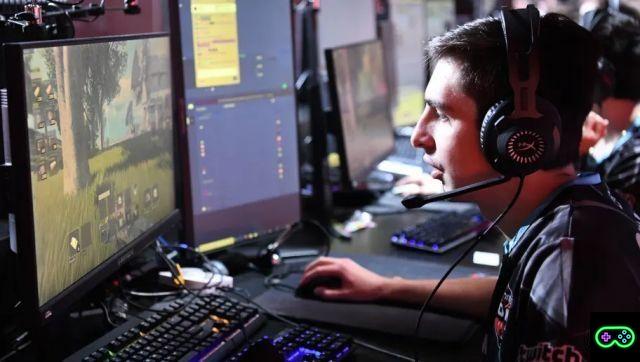
![[The Bear's Lair] God of War: Betrayal and Greek mythology](/images/posts/17432d3b12ecfec44b0b855d20c7520f-0.jpg)
